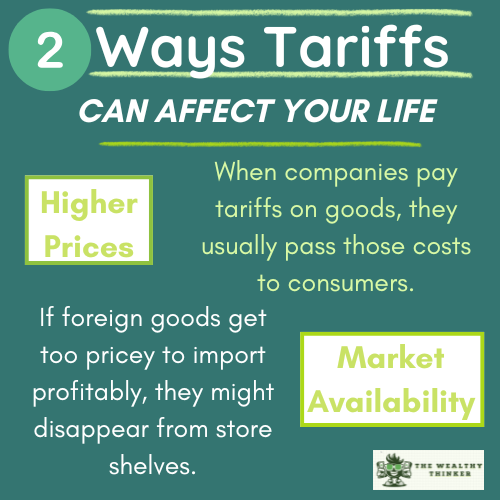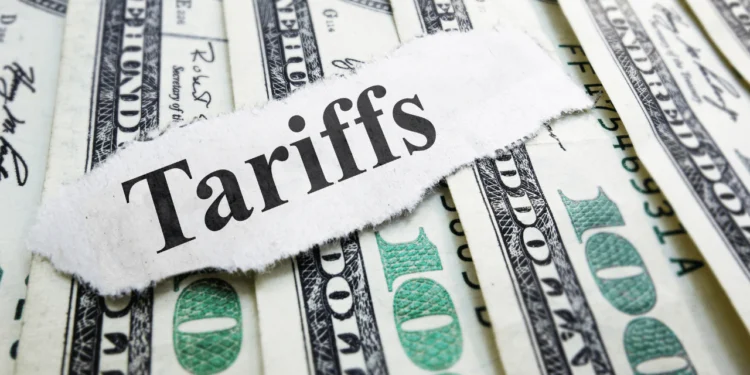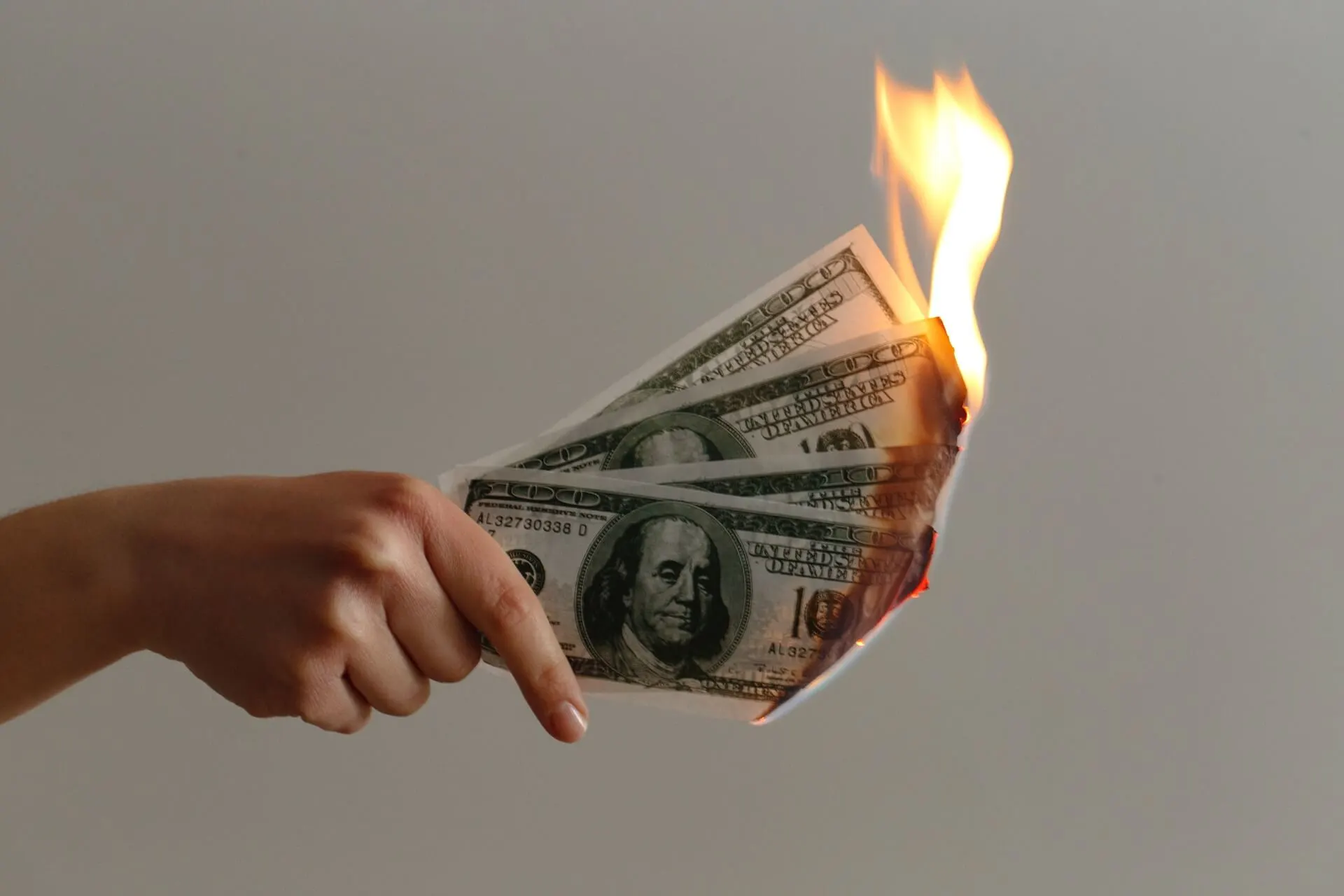Have you been confused about all this talk about tariffs in the news these last few months?
- What does it mean to have a tariff on an industry or product?
- How do they work?
- More importantly, how do they affect you?
You’re not alone. Tariffs might sound like dusty economic jargon, but they impact everything from the price of your favorite imported cheese to the cost of that new smartphone.
Let’s break down what tariffs really are, why they’ve been stirring up drama since the founding of our nation, and what they mean for your wallet.

The Tariff Basics: A Tax with a Passport
In the simplest terms, a tariff is a tax on imported goods.
The Oxford Dictionary defines it in this way:
a tax or duty to be paid on a particular class of imports or exports.
When a company brings products into this country from another country, the government charges a fee – usually a percentage of the product’s value.
For example, a 25% tariff on imported steel means a US company bringing in $100,000 worth of steel from Canada would pay an extra $25,000 to the Canadian government.
Think of it like a cover charge for products entering the country. Just as you might pay extra to enter an exclusive club, foreign goods pay extra to enter our market.
A Brief Walk Through Tariff History
Tariffs aren’t some newfangled economic tool – they’ve been around since the dawn of international trade. In fact, they were America’s primary source of federal revenue until income tax came along in the early 20th century.
In 1789, one of the first acts of Congress under the new Constitution was to establish tariffs on imported goods.
These taxes funded everything from building the nation’s infrastructure to running the government itself. For perspective, they provided about 90% of federal revenue in the 1870s.
The debate over tariffs has been dividing Americans for centuries.
Alexander Hamilton favored high tariffs to protect growing American industries, while Thomas Jefferson preferred lower tariffs to benefit farmers and consumers.
Sound familiar? We’re still having variations of this same argument today.
Why Governments Love (and Hate) Tariffs
Governments implement tariffs for several reasons, and they’re not all about money:
Protection for Domestic Industries
When cheaper foreign products flood the market, local businesses can struggle to compete. Tariffs level the playing field by making imports more expensive.
When the U.S. puts a tariff on foreign steel, American steel producers can compete more easily with international rivals.
Revenue Generation
While less important in modern America, they still bring billions into government coffers annually.
Political Leverage
Threatening or imposing tariffs can pressure other countries to change their policies. It’s economic muscle-flexing on the world stage.
National Security
Some industries are deemed too important to become dependent on foreign suppliers. Defense-related industries often receive tariff protection for this reason.
However, tariffs create winners and losers. While they might protect certain industries and workers, they also raise prices for consumers and businesses that use imported materials.
This trade-off explains why they remain contentious.
The Ripple Effects: How Tariffs Touch Your Life
Tariffs might seem distant and abstract, but they influence your daily life in tangible ways:
Higher Prices
When companies pay tariffs on imported goods, they typically pass those costs to consumers.
That 25% tariff on steel? It might make your new refrigerator cost more because manufacturers face higher material costs.
Job Market Impacts
Tariffs create complex employment effects.
They might preserve jobs in protected industries while reducing employment in businesses hurt by higher input costs or retaliatory tariffs from other countries.
Market Availability
Sometimes tariffs reduce the variety of products available.
If foreign goods become too expensive to import profitably, they might disappear from store shelves entirely.
Economic Relationships
Trade policies influence our diplomatic and economic relationships with other nations.
When we raise tariffs on Chinese goods, it affects everything from political tensions to tourism between countries.
Tariff Tales: Real-World Examples
Let’s look at some real-world tariff stories to see how they actually play out:
The Chicken Tax
In the 1960s, Europe placed tariffs on American chicken.
In retaliation, the U.S. imposed a 25% tariff on light trucks and commercial vans.
Surprisingly, this “temporary” measure is still in effect today, which is why you see so few foreign-made pickup trucks on American roads.
Washing Machine Taxes
In 2018, the U.S. imposed tariffs on imported washing machines.
Studies showed that while this protected some American manufacturing jobs, it also increased washing machine prices by about 12% for consumers.
The Smoot-Hawley Tariff Act
Perhaps the most infamous tariff legislation, this 1930 act raised tariffs on over 20,000 imported goods.
Many economists believe it worsened the Great Depression by reducing global trade.
The Tariff Debate Today
Today’s tariff debates echo those from centuries past.
Proponents argue they protect American jobs and industries from unfair foreign competition. Critics counter that they raise consumer prices and invite retaliation from trading partners.
Both sides make valid points.
A steel tariff might save jobs in Pennsylvania mills while simultaneously raising costs for automakers in Michigan. There’s rarely a clear-cut “right” answer – just different priorities and trade-offs.
The debate becomes even more complex when considering modern supply chains.
Many “American” products contain components from dozens of countries. In this interconnected world, they can have unpredictable consequences as they ripple through global production networks.
Inflation, Interest Rates & Mortgages: Connections & Effects On Your Wallet
The Bottom Line
Tariffs aren’t inherently good or bad – they’re tools with both benefits and costs.
Their effectiveness depends on specific circumstances and how trading partners respond.
When you hear politicians debating tariffs, listen for who benefits and who pays.
- Is it protecting vulnerable industries or raising prices for consumers?
- Is it addressing legitimate trade imbalances or just political theater?
Understanding them helps you evaluate these claims critically.
Remember, while tariffs have been around for centuries, the global economy continues to evolve.
Today’s interconnected markets mean that these simple taxes at the border can have complex and far-reaching consequences.
The next time you hear “tariff” in the news, you’ll have the context to understand what’s really at stake – for the economy and for your wallet.



















